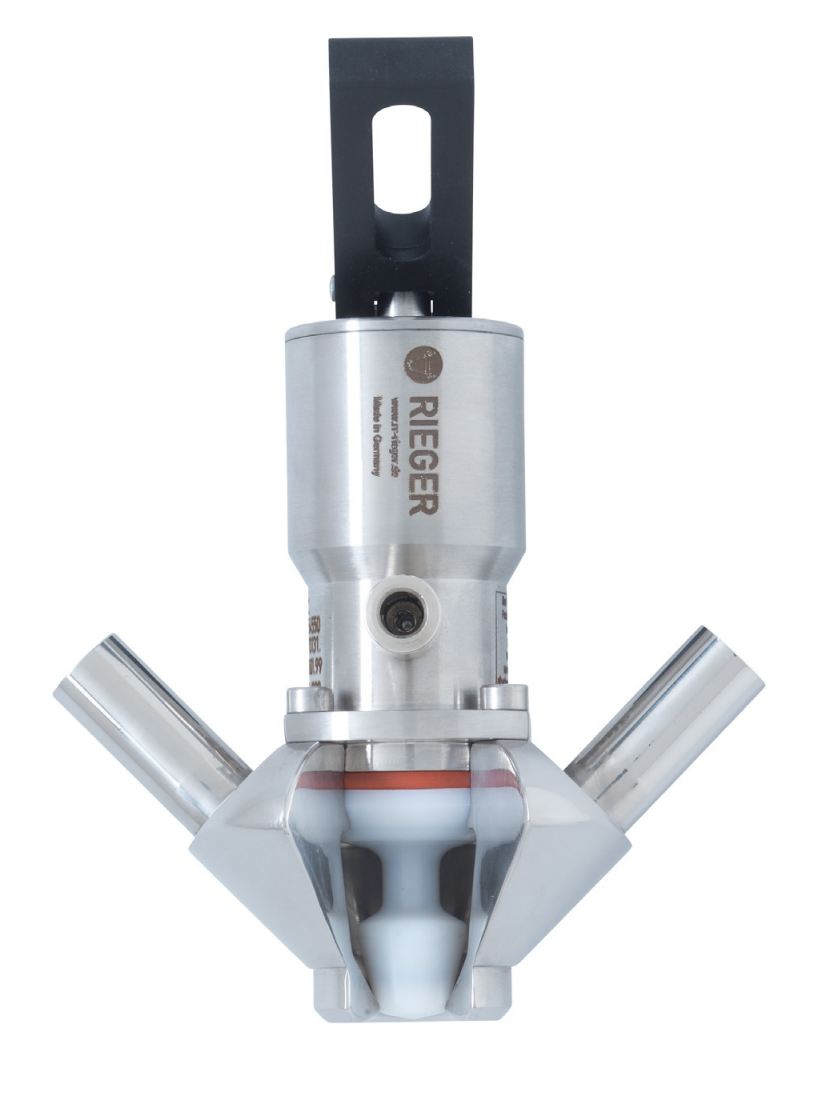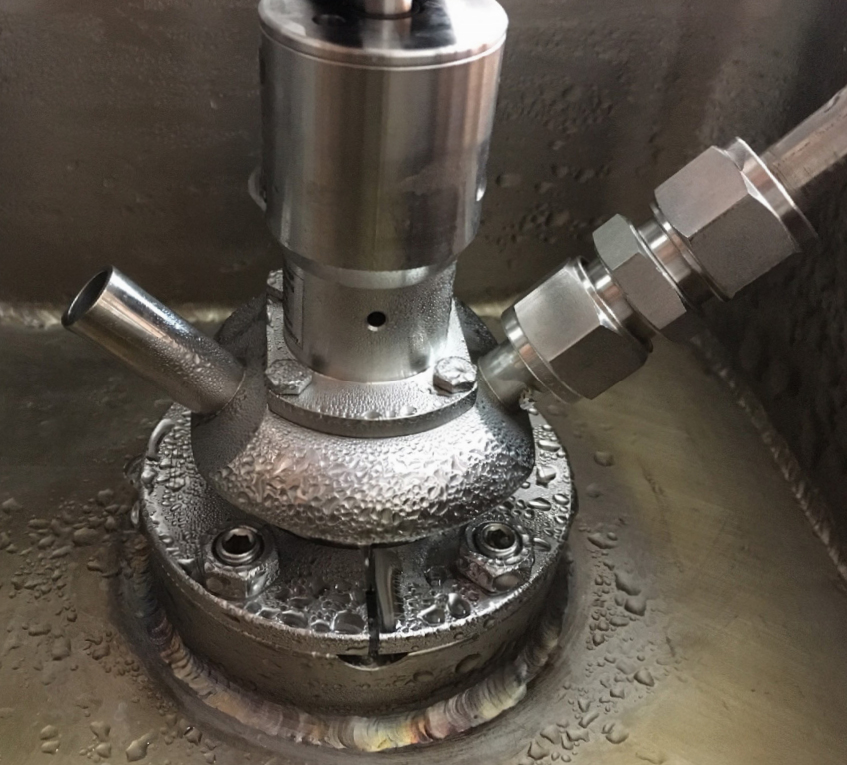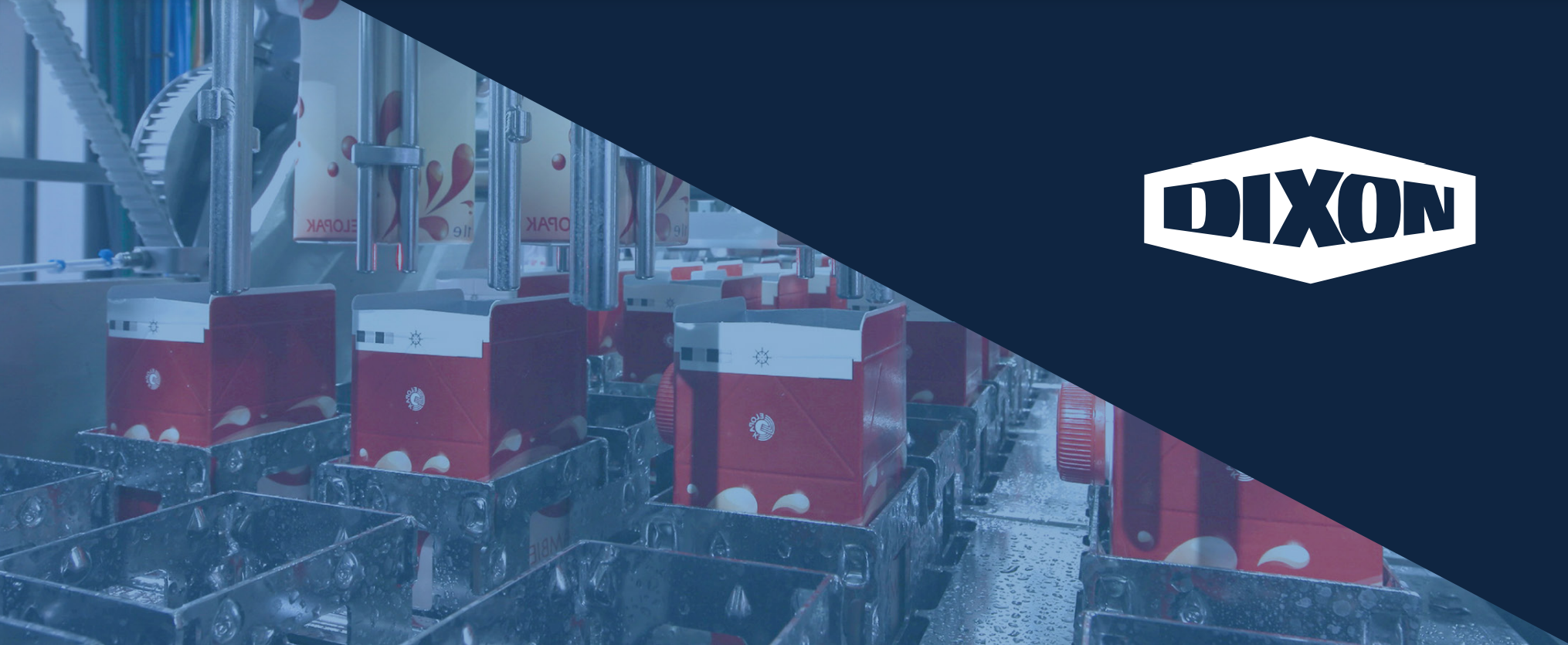
Sampling valve technology for aseptic processes
This whitepaper shall give you an insight into the different design principles of sampling valves as well as the philosophies of taking samples. Following the requirements of an aseptic process, you will learn how to select a state of the art aseptic sampling valve for your process, in your brewery.
Introduction
Running an aseptic process is not only influenced by the process design and the parameters during operation, e.g. steam temperatures during SIP, but also the usage of components within those systems. Those components need to fulfill certain design criteria with regards to cleanability and reduced risk of contamination.
Several areas are critical in an aseptic process system, which require special attention to avoid problems with contamination: the filling of the product and the sampling of the product. At those two points the challenge is to get the product out of the system into the environment (package or sampling bottle) without getting air and bacteria/germs/microorganisms in the system. Filling machines are designed in a way that the point of filling is in a sterile atmosphere, which creates a “safe environment” around the filling valves, which operate automated. In contrast to the filling application most sampling applications are operated manually by the operator from the laboratory, who takes the sample. The valve needs to be accessible and therefore is exposed to the environment.
If we could avoid taking any sample and only check the end product, this would be the ideal situation. However, only having a quality check at the very end could cost a business a lot of money, as it heightens the risk of the batch not being in a saleable condition. The more value added to the product along the production process, the more money is lost if the end product is useless. It also has the negative impact of having to rectify the problem with the process line which in turn halts production.
In a manufacturing plant the workers in an assembly line conduct a quality check after each production step, before the parts will be forwarded to the next assembly point. In production plants for food and beverages, check points after each production step are recommended, which entails a sample of the product being taken and the quality checked before it is pushed further downstream. If a bad sample has been received decisions have to be made whether the product can still be used or not. To be able to make such a decision with the correct facts, it is important to know whether the product itself is bad or the sampling procedure and/or equipment being used is not state of the art.
Hence, one has to ensure the sampling equipment and the way one takes the sample are as good as possible, this then ensures the company to rely on both parts of the process to allow continuous production of food and beverages in a high quality.

Know your process
In order to select the appropriate equipment, the equipment needs to be considered within the plants working conditions. The equipment is often blamed as the reason for problems in a production plant. The equipment used in the process can only be as good as the process allows it to be. The parameters of the process, such as the media (product and cleaning media) used, flow rates, pressures and temperatures all set the conditions for the equipment and determine its specifications.
In the food industry the discharge pressures for production are commonly 6 bar/87 PSI (in some cases higher depending on the product). Valves have to be selected accordingly. The desired flow rate determines the size of the tubing, which governs the size of the valves. The product and the cleaning media used have influence on the selection of the correct sealing material. Also the temperatures, which are reached during production and sterilization have an effect on the sealing material and its selection with regard to process safety and life time.
The trend within the industry goes towards higher sterilization temperatures to shorten the overall time for sterilization, as the system needs lower time to reach the required 121° C (250° F)1 in all cold spots of the system. This temperature is referred to in several sources of literature to be the optimum temperature for sterilization as all bacteria and germs are killed.
This is an important factor to consider, the sealing materials used in your equipment within a closed system. For sampling valves however, the steam sterilization is done right before taking the sample for approx. <1 min (recommendation from the German Dairy School in Kempten). Sterilization is only needed to kill bacteria and germs at the point 6 Selecting the Correct Sampling Valve Technology for Aseptic Processes of and directly before sampling, so the steam is directly injected at the point of sampling, so temperatures of 121° C (249.8 °F) can be reached quickly, therefore there is no need to bring in higher steam temperatures into the sampling process.
Is my process aseptic?
If the answer is yes, you will then need aseptic components incorporated into the process therefore all hygienic valves are not considered aseptic and can be ignored for your selection. Within the range of aseptic valves out in the market, only a few different sealing concepts have arisen over time, which I’d like to introduce in the following:
What is an aseptic valve?

An aseptic valve uses a sealing around the stem to secure the inside of the valve body hermetically to the environment and avoid the so called “lift effect”, which is created through the stem travel and thus can “pull” foreign bodies from the environment into the process, which may lead to contamination.
They can be categorized into two groups: diaphragms and bellows.
1. Diaphragms:
Diaphragms are soft and flexible sealing pieces of elastomer that either cover the stem completely or are attached at the stem. The diaphragm is completely stressed and distressed during valve strokes and moves completely. In the interface areas between the elastomer and the stainless steel there is a risk of contamination as product can get trapped.
2. Bellows:
Two common bellow styles are used in food and beverage production.
a) Metal Bellows
b) PTFE Bellows
Each style has its own advantages and disadvantages and the selection of either one is also based on the philosophy of the process design and on the way the process is run.
Metal bellows are the ones to choose when your system is facing high temperatures during sterilization (beyond 135° C (275° F)for a long time) as the softer PTFE materialcannot stand it when sterilization at this temperature exceeds a duration of approx. 20 mins. If temperatures are at 135° C (275° F) for a maximum of 20 min. or below,there is no need to choose metal bellows as PTFE-bellows carry many advantages compared to metal bellows, such as life time and price.
BioCheck Sampling Valves by RIEGER are only available with PTFE-bellows as this is the optimum aseptic sealing philosophy out in the market with regards to aseptic design principles.
Here are a few reasons, why PTFE-bellows should be used whenever possible:
First, PTFE is resistant against nearly every medium, which is used in food and beverage production. In contrast, metal bellows need to be equipped with the correct sealing material according to the product. This brings us to the second point. Metal bellows need atleast two sealing elements, which sit in their grooves. One in the upper area of the bellow, to seal it against the body, one on its tip to let the valve seat seal. Those grooves are additional gaps within the product touched surfaces, hence they increase the risk of contamination.

A RIEGER PTFE bellow is a one-piece sealing in contact with the product only and has a minimum risk for contamination. The folds of RIEGER’s PTFE bellows always stay open during cleaning and allow all product remainings to be cleaned out. The PTFE bellow of the BioCheck Valves is optimized even more and only has one fold. Metal bellows have their folds moving together completely, so product can get trapped and stay as a potential growth area for bacteria within the product touched surfaces.
The PTFE bellows of the BioCheck Valves move only in one defined spot, so no movement takes place in the critical sealing areas around the head works of the valve body. Its non-adhesive surface makes it easy to clean.
The above mentioned critical sealing area on the body’s head works, for example, is one of the areas where product gets trapped in sampling valves with e.g. EPDM or Silicon diaphragms (softer material has more movement and ’pumps’ product into dead spaces).
In the dead space, product can collect and contaminate the process. A valve without dead spaces is easier to clean and drains completely. A dead space free design allows the product to flow gently through the sampler to keep up the product quality. Not only the BioCheck Sampling Valves, but also all other aseptic valves in general at Rieger, use PTFE bellows as a standard. The full aseptic process valve N7 and aseptic single seat valves, carry the same design principles and offer the same benefits to clients all over the world.
Avoid the worst case scenario
Let us explore that fact you are saving money on a valve lifecycle, but running a high risk with the chances of contamination. What is the worst case scenario?
Contamination can seriously damage your market, e.g. the contaminated product went to the supermarket, got purchased and consumed and then caused health problems and/or deaths of the public. This can happen if product gets contaminated and infection is not recognized by the quality inspection process at the plant.
Let’s assume the quality control is well enough implemented and any contamination is detected before finished goods go out to the stores. So what is the worst case scenario then? Contamination of a product may lead to the complete rejection of a batch (waste) and requires a complete shutdown, with a new start-up of the production after having sterilized the complete unit/system.
So we all agree that contamination needs to be avoided. Neglecting all factors previously discussed can lead to contamination. Contamination will definitely take place in an aseptic process in which a connection to the environment is established and bacteria from the environment can migrate into the system. This can happen from one second to the next: if the aseptic sealing element (bellow, diaphragm, etc.) to the environment breaks.
Comparing the three types of gaskets used in aseptic valves (diaphragms, PTFE bellows and metal bellows), the worst case scenario is possible for the diaphragm and the metal bellow, but not for the PTFE bellow. A PTFE bellow has the unique advantage that it cannot crack completely. It can only get stressed or deformed, but the sealing barrier to the environment will still exist.
Considering the above mentioned criteria for selecting a sampling valve, this knowhow whitepaper will help you to increase product safety and reduce your risk of contamination in your brewery.
To learn more about RIEGER’s unique PTFE bellow technology, visit dixonvalve.com.au and download the latest brochure or call us directly on 1300 134 651.




